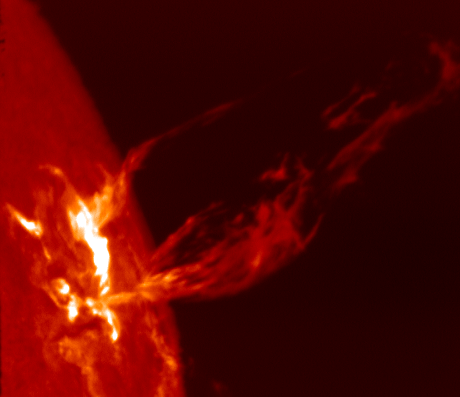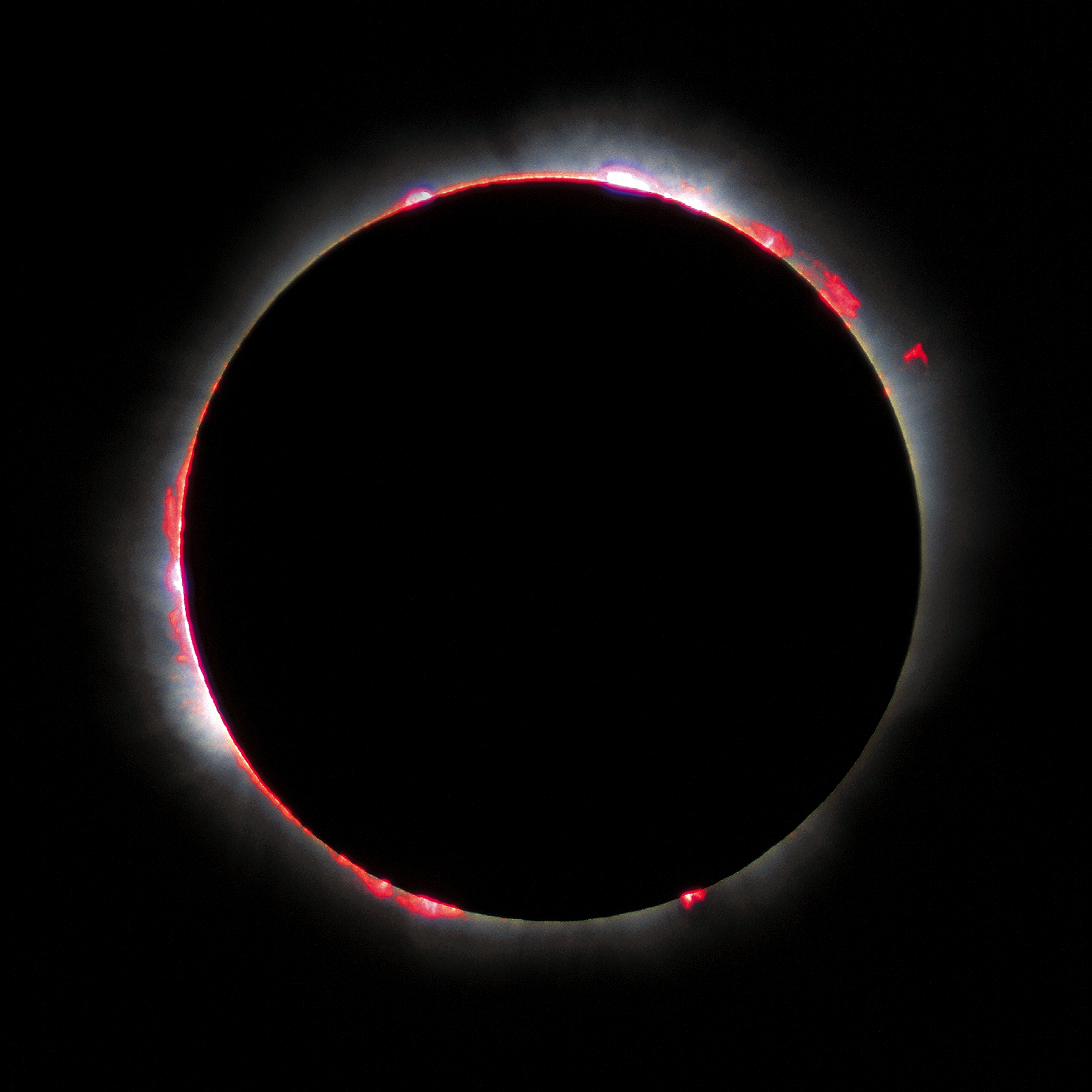|
HD179949
HD 179949 is a 6th magnitude star in the constellation of Sagittarius. It is a yellow-white dwarf ( spectral class F8 V), a type of star hotter and more luminous than the Sun. The star is located about 90 light years from Earth and might be visible under exceptionally good conditions to an experienced observer without technical aid; usually binoculars are needed. The star HD 179949 is named Gumala. The name was selected in the NameExoWorlds campaign by Brunei, during the 100th anniversary of the IAU. Gumala is a Malay word, which means a magic bezoar stone found in snakes, dragons, etc. Properties This is an F-type main-sequence star classified with a spectral type of F8V. It has an estimated mass of 1.23 times the solar mass and a radius of 1.20 times the solar radius. Its photosphere is shining with 1.95 times the solar luminosity at an effective temperature of 6,220 K. Its metallicity, the abundance of elements other than hydrogen and helium, is hig ... [...More Info...] [...Related Items...] OR: [Wikipedia] [Google] [Baidu] |
Sagittarius (constellation)
Sagittarius is one of the constellations of the zodiac and is located in the Southern celestial hemisphere. It is one of the 48 constellations listed by the 2nd-century astronomer Ptolemy and remains one of the 88 modern constellations. Its old astronomical symbol is (♐︎). Its name is Latin for " archer". Sagittarius is commonly represented as a centaur pulling back a bow. It lies between Scorpius and Ophiuchus to the west and Capricornus and Microscopium to the east. The center of the Milky Way lies in the westernmost part of Sagittarius (see Sagittarius A). Visualizations As seen from the northern hemisphere, the constellation's brighter stars form an easily recognizable asterism known as "the Teapot". The stars δ Sgr (Kaus Media), ε Sgr (Kaus Australis), ζ Sgr (Ascella), and φ Sgr form the body of the pot; λ Sgr (Kaus Borealis) is the point of the lid; γ2 Sgr (Alnasl) is the tip of the spout; and σ Sgr (Nunki) and τ Sgr the handle. These s ... [...More Info...] [...Related Items...] OR: [Wikipedia] [Google] [Baidu] |
Solar Radius
Solar radius is a unit of distance used to express the size of stars in astronomy relative to the Sun. The solar radius is usually defined as the radius to the layer in the Sun's photosphere where the optical depth equals 2/3: :1\,R_ = 6.957\times 10^8 \hbox is approximately 10 times the average radius of Jupiter, about 109 times the radius of the Earth, and 1/215th of an astronomical unit, the distance of the Earth from the Sun. It varies slightly from pole to equator due to its rotation, which induces an oblateness in the order of 10 parts per million. Measurements The unmanned SOHO spacecraft was used to measure the radius of the Sun by timing transits of Mercury across the surface during 2003 and 2006. The result was a measured radius of . Haberreiter, Schmutz & Kosovichev (2008) determined the radius corresponding to the solar photosphere to be . This new value is consistent with helioseismic estimates; the same study showed that previous estimates using inflectio ... [...More Info...] [...Related Items...] OR: [Wikipedia] [Google] [Baidu] |
Rotational Modulation
This glossary of astronomy is a list of definitions of terms and concepts relevant to astronomy and cosmology, their sub-disciplines, and related fields. Astronomy is concerned with the study of celestial objects and phenomena that originate outside the atmosphere of Earth. The field of astronomy features an extensive vocabulary and a significant amount of jargon. A B C D E F G H I J K L ... [...More Info...] [...Related Items...] OR: [Wikipedia] [Google] [Baidu] |
BY Draconis Variable
BY Draconis variables are variable stars of late spectral types, usually K or M, and typically belong to the main sequence. The name comes from the archetype for this category of variable star system, BY Draconis. They exhibit variations in their luminosity due to rotation of the star coupled with starspots, and other chromospheric activity. Resultant brightness fluctuations are generally less than 0.5 magnitudes. Light curves of BY Draconis variables are quasiperiodic. The period is close to the star's mean rotational rate. The light curve is irregular over the duration of the period and it changes slightly in shape from one period to the next. For the star BY Draconis the shape of the light curve over a period remained similar for a month. Nearby K and M stars that are BY Draconis variables include Barnard's Star, Kapteyn's Star, 61 Cygni, Ross 248, Lacaille 8760, Lalande 21185, and Luyten 726-8. Ross 248 is the first discovered BY Draconis variable, the variability h ... [...More Info...] [...Related Items...] OR: [Wikipedia] [Google] [Baidu] |
Projected Rotational Velocity
Stellar rotation is the angular motion of a star about its axis. The rate of rotation can be measured from the spectrum of the star, or by timing the movements of active features on the surface. The rotation of a star produces an equatorial bulge due to centrifugal force. As stars are not solid bodies, they can also undergo differential rotation. Thus the equator of the star can rotate at a different angular velocity than the higher latitudes. These differences in the rate of rotation within a star may have a significant role in the generation of a stellar magnetic field. The magnetic field of a star interacts with the stellar wind. As the wind moves away from the star its rate of angular velocity slows. The magnetic field of the star interacts with the wind, which applies a drag to the stellar rotation. As a result, angular momentum is transferred from the star to the wind, and over time this gradually slows the star's rate of rotation. Measurement Unless a star is being obs ... [...More Info...] [...Related Items...] OR: [Wikipedia] [Google] [Baidu] |
Differential Rotation
Differential rotation is seen when different parts of a rotating object move with different angular velocities (rates of rotation) at different latitudes and/or depths of the body and/or in time. This indicates that the object is not solid. In fluid objects, such as accretion disks, this leads to shearing. Galaxies and protostars usually show differential rotation; examples in the Solar System include the Sun, Jupiter and Saturn. Around the year 1610, Galileo Galilei observed sunspots and calculated the rotation of the Sun. In 1630, Christoph Scheiner reported that the Sun had different rotational periods at the poles and at the equator, in good agreement with modern values. The cause of differential rotation Stars and planets rotate in the first place because conservation of angular momentum turns random drifting of parts of the molecular cloud that they form from into rotating motion as they coalesce. Given this average rotation of the whole body, internal differential rotat ... [...More Info...] [...Related Items...] OR: [Wikipedia] [Google] [Baidu] |
Gauss (unit)
The gauss, symbol (sometimes Gs), is a unit of measurement of magnetic induction, also known as '' magnetic flux density''. The unit is part of the Gaussian system of units, which inherited it from the older CGS-EMU system. It was named after the German mathematician and physicist Carl Friedrich Gauss in 1936. One gauss is defined as one maxwell per square centimetre. As the cgs system has been superseded by the International System of Units (SI), the use of the gauss has been deprecated by the standards bodies, but is still regularly used in various subfields of science. The SI unit for magnetic flux density is the tesla (symbol T), which corresponds to . Name, symbol, and metric prefixes Albeit not a component of the International System of Units, the usage of the gauss generally follows the rules for SI units. Since the name is derived from a person's name, its symbol is the uppercase letter ''G''. When the unit is spelled out, it is written in lowercase ("gauss"), unles ... [...More Info...] [...Related Items...] OR: [Wikipedia] [Google] [Baidu] |
Stellar Magnetic Field
A stellar magnetic field is a magnetic field generated by the motion of conductive plasma inside a star. This motion is created through convection, which is a form of energy transport involving the physical movement of material. A localized magnetic field exerts a force on the plasma, effectively increasing the pressure without a comparable gain in density. As a result, the magnetized region rises relative to the remainder of the plasma, until it reaches the star's photosphere. This creates starspots on the surface, and the related phenomenon of coronal loops. Measurement The magnetic field of a star can be measured by means of the Zeeman effect. Normally the atoms in a star's atmosphere will absorb certain frequencies of energy in the electromagnetic spectrum, producing characteristic dark absorption lines in the spectrum. When the atoms are within a magnetic field, however, these lines become split into multiple, closely spaced lines. The energy also becomes polarized with ... [...More Info...] [...Related Items...] OR: [Wikipedia] [Google] [Baidu] |
Chromosphere
A chromosphere ("sphere of color") is the second layer of a star's atmosphere, located above the photosphere and below the solar transition region and corona. The term usually refers to the Sun's chromosphere, but not exclusively. In the Sun's atmosphere, the chromosphere is roughly in height, or slightly more than 1% of the Sun's radius at maximum thickness. It possesses a homogeneous layer at the boundary with the photosphere. Hair-like jets of plasma, called spicules, rise from this homogeneous region and through the chromosphere, extending up to into the corona above. The chromosphere has a characteristic red color due to electromagnetic emissions in the ''H''α spectral line. Information about the chromosphere is primarily obtained by analysis of its emitted electromagnetic radiation. Chromospheres have also been observed on stars other than the Sun. On large stars, chromospheres sometimes make up a significant proportion of the entire star. For example, the chr ... [...More Info...] [...Related Items...] OR: [Wikipedia] [Google] [Baidu] |
Metallicity
In astronomy, metallicity is the abundance of elements present in an object that are heavier than hydrogen and helium. Most of the normal physical matter in the Universe is either hydrogen or helium, and astronomers use the word ''"metals"'' as a convenient short term for ''"all elements except hydrogen and helium"''. This word-use is distinct from the conventional chemical or physical definition of a metal as an electrically conducting solid. Stars and nebulae with relatively high abundances of heavier elements are called "metal-rich" in astrophysical terms, even though many of those elements are nonmetals in chemistry. The presence of heavier elements hails from stellar nucleosynthesis, where the majority of elements heavier than hydrogen and helium in the Universe (''metals'', hereafter) are formed in the cores of stars as they evolve. Over time, stellar winds and supernovae deposit the metals into the surrounding environment, enriching the interstellar medium and provid ... [...More Info...] [...Related Items...] OR: [Wikipedia] [Google] [Baidu] |
Kelvin
The kelvin, symbol K, is the primary unit of temperature in the International System of Units (SI), used alongside its prefixed forms and the degree Celsius. It is named after the Belfast-born and University of Glasgow-based engineer and physicist William Thomson, 1st Baron Kelvin (1824–1907). The Kelvin scale is an absolute thermodynamic temperature scale, meaning it uses absolute zero as its null (zero) point. Historically, the Kelvin scale was developed by shifting the starting point of the much-older Celsius scale down from the melting point of water to absolute zero, and its increments still closely approximate the historic definition of a degree Celsius, but since 2019 the scale has been defined by fixing the Boltzmann constant to be exactly . Hence, one kelvin is equal to a change in the thermodynamic temperature that results in a change of thermal energy by . The temperature in degree Celsius is now defined as the temperature in kelvins minus 273.15, meanin ... [...More Info...] [...Related Items...] OR: [Wikipedia] [Google] [Baidu] |






